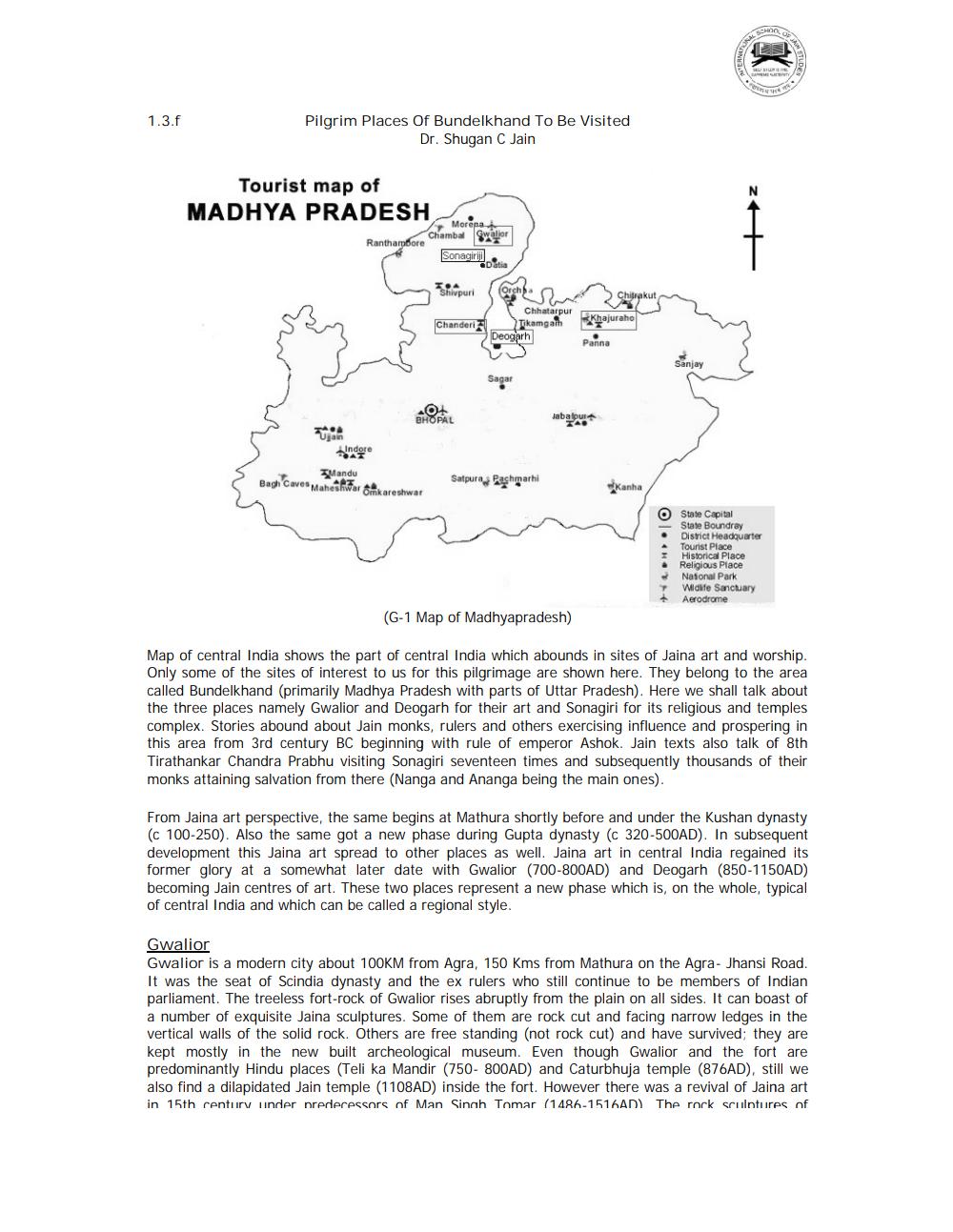________________
1.3.f
Pilgrim Places Of Bundelkhand To Be Visited
Dr. Shugan C Jain
Tourist map of MADHYA PRADESH
Morena Ranthambore Chambal Swalior
!
Sonagiri..dia
Chanderi
Chhatarpur
Tikamgarh Deogarh
Khajuraho
Panna
Sagar
jabalpur
Mandu
Bagh Caves Maheshwar imkareshwat
Satpura. Pashmarhi
O
State Capital State Boundray District Headquarter Tourist Place Historical Place Religious Place National Park Wildlife Sanctuary Aerodrome
(G-1 Map of Madhyapradesh)
Map of central India shows the part of central India which abounds in sites of Jaina art and worship. Only some of the sites of interest to us for this pilgrimage are shown here. They belong to the area called Bundelkhand (primarily Madhya Pradesh with parts of Uttar Pradesh). Here we shall talk about the three places namely Gwalior and Deogarh for their art and Sonagiri for its religious and temples complex. Stories abound about Jain monks, rulers and others exercising influence and prospering in this area from 3rd century BC beginning with rule of emperor Ashok. Jain texts also talk of 8th Tirathankar Chandra Prabhu visiting Sonagiri seventeen times and subsequently thousands of their monks attaining salvation from there (Nanga and Ananga being the main ones).
From Jaina art perspective, the same begins at Mathura shortly before and under the Kushan dynasty (c 100-250). Also the same got a new phase during Gupta dynasty (c 320-500AD). In subsequent development this Jaina art spread to other places as well. Jaina art in central India regained its former glory at a somewhat later date with Gwalior (700-800AD) and Deogarh (850-1150AD) becoming Jain centres of art. These two places represent a new phase which is, on the whole, typical of central India and which can be called a regional style.
Gwalior Gwalior is a modern city about 100KM from Agra, 150 Kms from Mathura on the Agra. Jhansi Road. It was the seat of Scindia dynasty and the ex rulers who still continue to be members of Indian parliament. The treeless fort-rock of Gwalior rises abruptly from the plain on all sides. It can boast of a number of exquisite Jaina sculptures. Some of them are rock cut and facing narrow ledges in the vertical walls of the solid rock. Others are free standing (not rock cut) and have survived; they are kept mostly in the new built archeological museum. Even though Gwalior and the fort are predominantly Hindu places (Teli ka Mandir (750- 800AD) and Caturbhuja temple (876AD), still we also find a dilapidated Jain temple (1108AD) inside the fort. However there was a revival of Jaina art in 15th century under predecessors of Man Singh Tomar (1486-1516AD) The rock sculptures of




